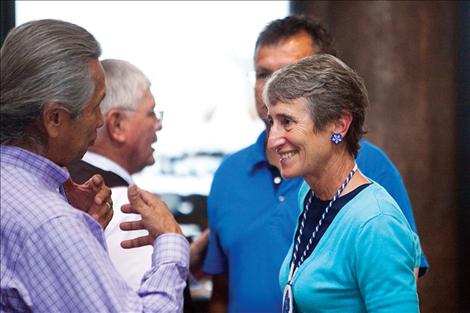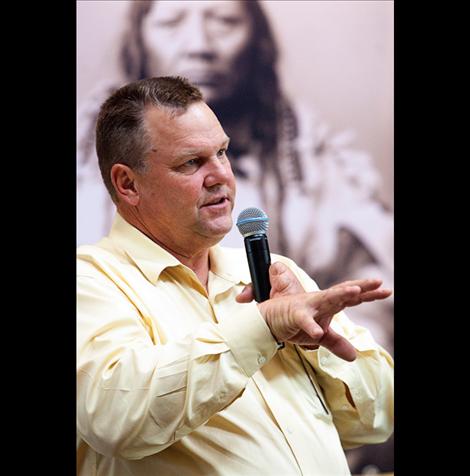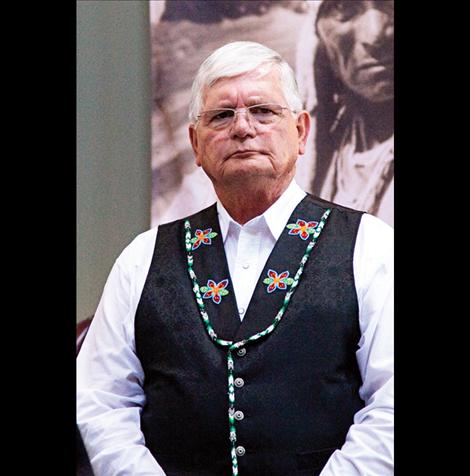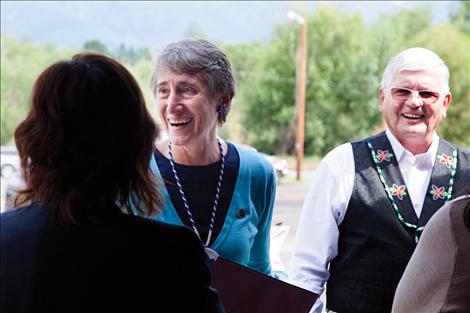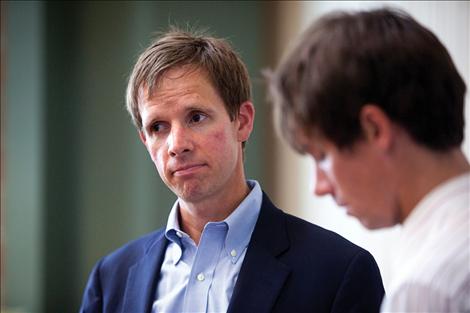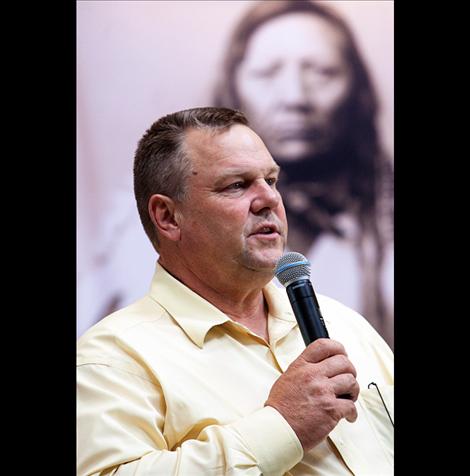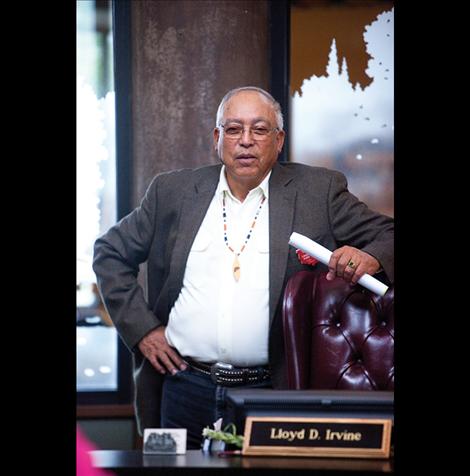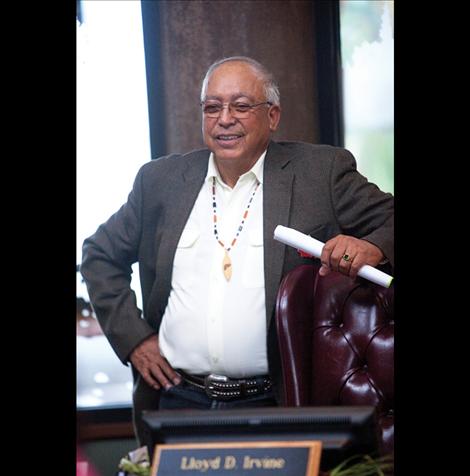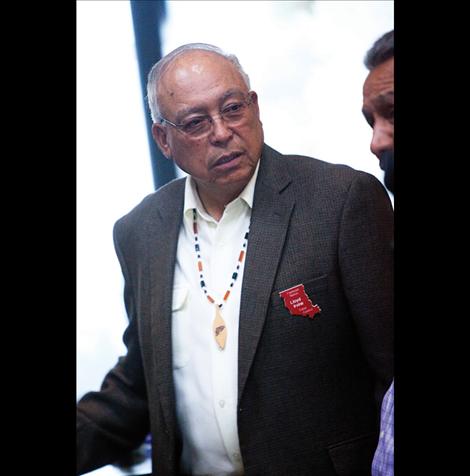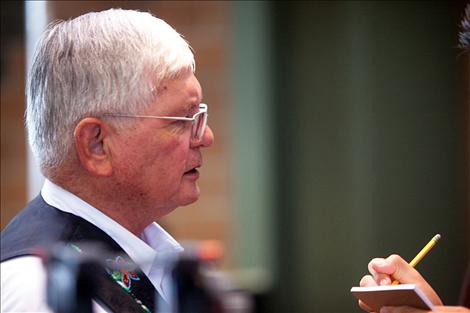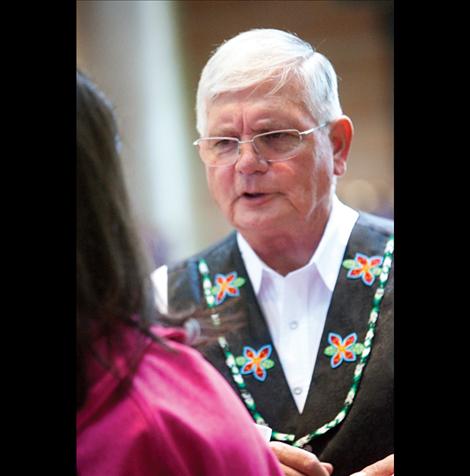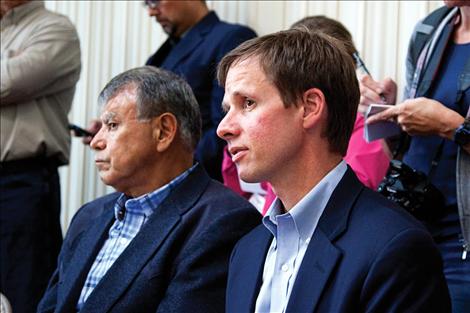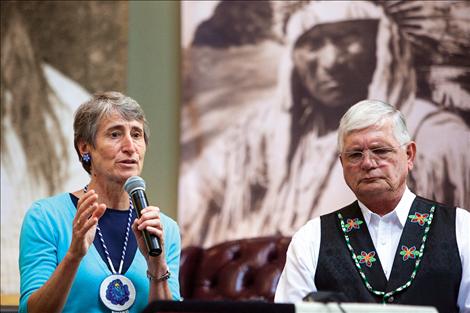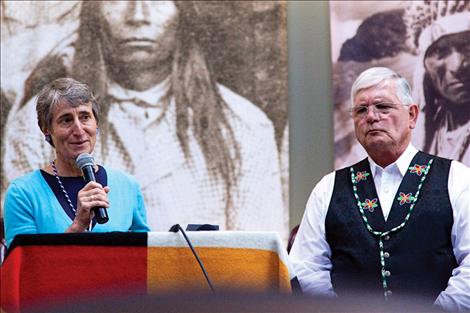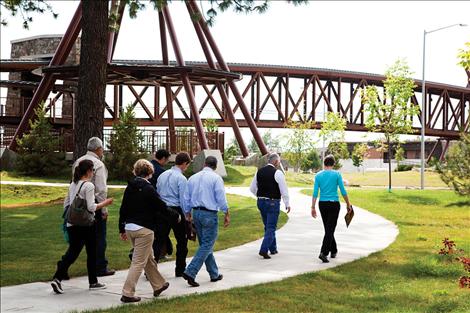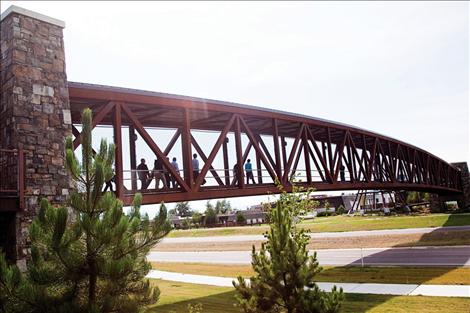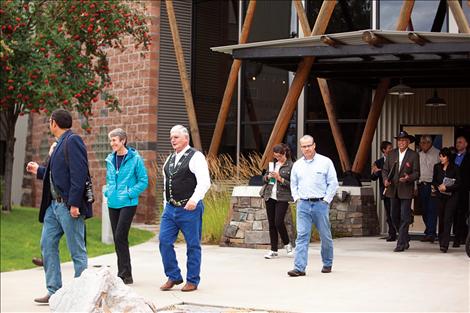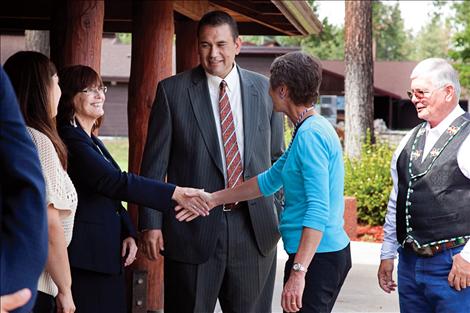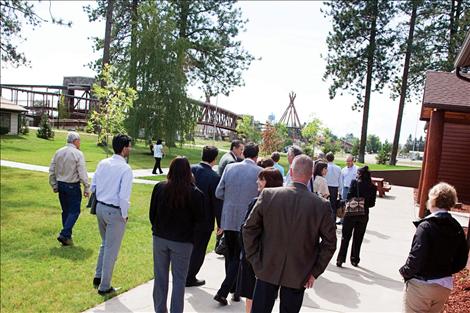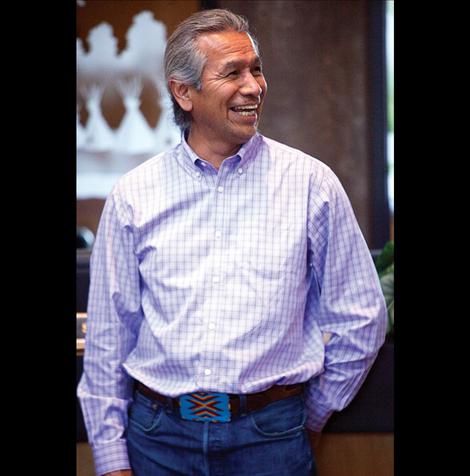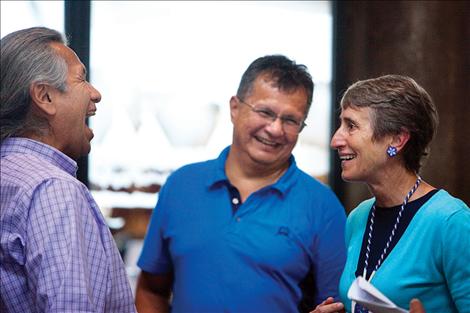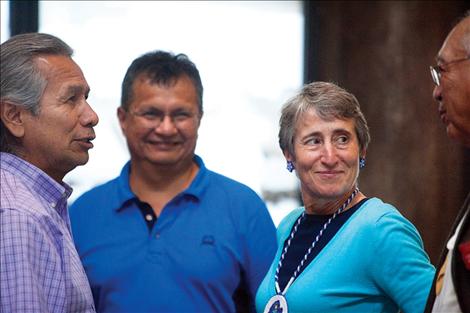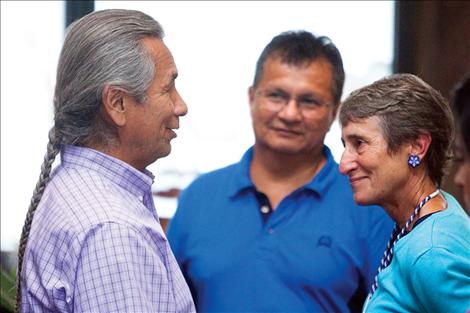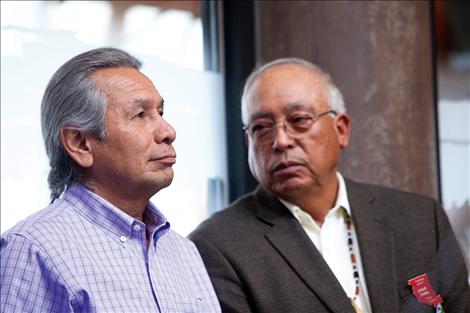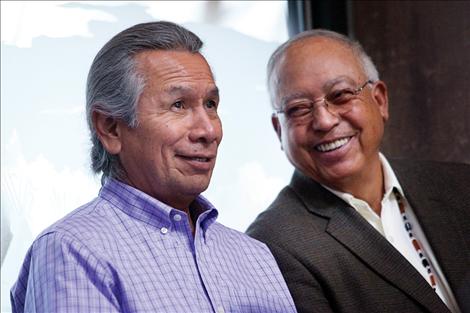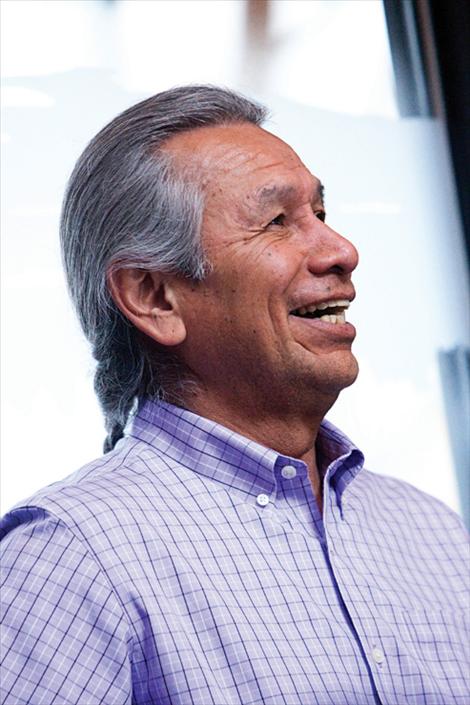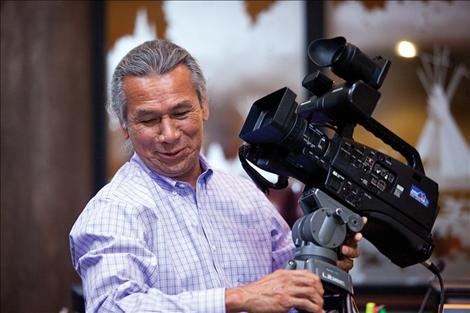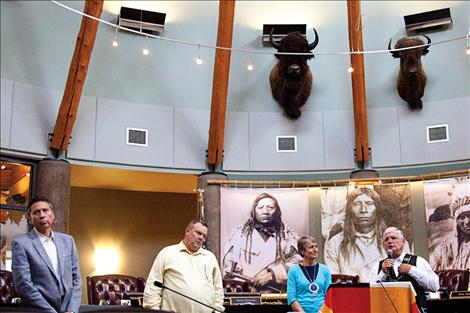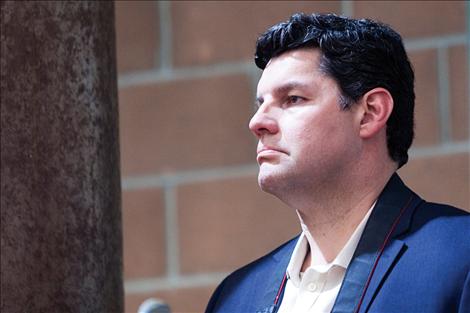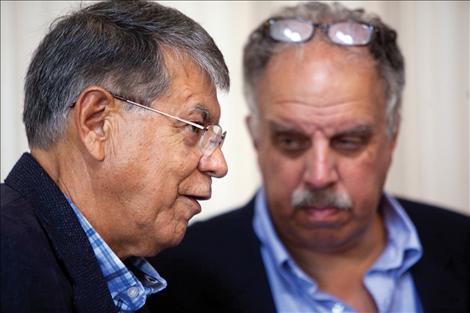Buyback offers will roll out Sept. 5
Hey savvy news reader! Thanks for choosing local.
You are now reading
1 of 3 free articles.
RONAN – Last week a delegation of some of the nation’s highest ranking officials visited the Pablo headquarters of Confederated Salish and Kootenai Tribes with a promise to help the Tribes reconsolidate lands lost to poor management by the federal government through a land buyback program that is part of the $3.4 billion Cobell settlement.
The buyback comes more than a century after the United States government broke the Flathead Reservation into tiny pieces and allotted it to individual Indians, and then handed the leftovers over to homesteading non-tribal settlers.
The pieces that were allotted to tribal members were supposed to be managed and kept in trust by the United States government, but years of mismanagement ensued.
“Consolidating lands will help Tribes develop new economic opportunities, create jobs, provide financial resources for their members, and it is a step long overdue that will fix a wrong in Indian Country,” Senator Jon Tester said.
The Tribes have been allotted $7.8 million to purchase more than 38,000 acres of lands that were fractionated and unworkable over the years as those who held the land in trust failed to establish a clear chain of title and ownership.
“The reason we are in this problem to begin with is that tribal pass on with no will and the land gets divided among their heirs, and the same thing happens with their heirs,” Secretary of the Interior Sally Jewell said in a historic first visit to the reservation by a person holding her office. “You end up with a situation with what was actually a pretty workable piece of land divided into literally hundreds of pieces that nobody can do anything with … That’s the problem we’re solving so we don’t continue this cycle.”
Jewell said the buyback program has resulted from a combination of factors that include a commitment from the Obama administration to do right by Indian constituents and the visionary work of the Tribes in jumping at the chance to take advantage of self-determination and their sovereignty.
“This tribe has been one of the models in this country of strong tribal government, strong tribal leadership and really being a pioneer in many ways,” Jewell said.
The buyback program will begin sending out offers beginning Sept. 5. There is a 45-day time frame to accept an offer. The Tribes are 20 months into a 10-year time frame allotted to complete the buyback program, although that time limit and other aspects of the program have faced scrutiny in Congressional hearings. Tribal Vice-Chair Carole Lankford testified in Congress last month about problems with the programs.
“Given the hoops we had to jump through and the dozens of rewrites we had to negotiate, combined with what we are hearing from other tribes, we are concerned that the implementation of this important program will not achieve the intended result, which is to reduce the number of fractionated interests,” Lankford said. “While the CSKT do have a signed cooperative agreement for land buyback, we have yet to be able to purchase one fractioned interest. We believe this is due to cumbersome program implementation and design.”
Tester said there is opportunity for improvement in the program, and it is a priority to uphold the federal government’s responsibility.
“We all know there is more to be done,” Tester said. “Checks need to be issued more quickly and I will continue to hold the Garden City Group (administrator of claims) accountable for that.”
Tribal Chairman Ron Trahan said he was glad to finally see some action happening for the program, despite the hiccups.
“You always hear that the check is in the mail,” Trahan said. “Well, soon it will be.”
Special Trustee for American Indians Vincent Logan said he spent a few days prior to the buyback announcement touring the reservation, and saw programs in action that might prevent further fractionation of lands in the future. One program teaches financial planning and encourages tribal members to leave wills behind when they die.
“What we’re doing is building a platform through the special trustee’s office to teach financial education from cradle to grave,” Logan said. “That’s from budgets, to credits, to the first paycheck, to wills at the end of the story.”















